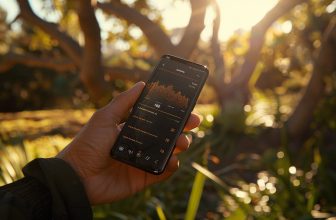Futures trading is a financial instrument that enables investors to speculate on the future price movements of an underlying asset. It is a contract between two parties where the buyer agrees to purchase an asset at a specific price on a predetermined date in the future. Futures trading has been around for centuries, evolving from traditional commodities such as grains and livestock to modern-day cryptocurrencies. In this article, we will explore the basics of futures trading, the types of assets used, and how it works, and delve into the world of crypto futures and derivatives.
1. Introduction to Futures Trading
A. Definition and Overview
Futures trading is a financial contract where two parties agree to buy or sell a specified asset at a predetermined price and date. The contract’s price is determined based on the underlying asset’s current market price, allowing traders to speculate on the asset’s future price movements.
B. History and Evolution of Futures Trading
Futures trading has been around for centuries, with evidence of its use in ancient civilizations. It was initially used for agricultural commodities, such as grains and livestock, to manage price risks. In the 20th century, futures trading expanded to include financial instruments like currencies, indices, and stocks.
2. Types of Assets Used for Futures Trading
A. Traditional assets
1. Commodities
These include agricultural products (wheat, corn, soybeans), energy resources (crude oil, natural gas), and metals (gold, silver, copper).
2. Currencies
Forex futures involve contracts for buying or selling currencies at a future date.
3. Indices
At a future date, stock index futures are agreements to buy or sell a stock markets index, such as the S&P 500 or Dow Jones Industrial Average.
B. Cryptocurrencies
1. Bitcoin
The most well-known cryptocurrency, Bitcoin futures, allows investors to speculate on the future price of the digital asset.
2. Ethereum
Ethereum futures enable investors to trade on the future price of Ether, the native cryptocurrency of the Ethereum network.
3. Altcoins
Futures contracts for other cryptocurrencies, like Litecoin, Ripple, and more, provide additional opportunities for speculation and hedging.
3. How Does Futures Trading Work?
A. Basic principles
1. Contract specifications
Futures contracts include details like the underlying asset, contract size, price increment, and expiration date.
2. Margin and leverage
Investors typically use margin accounts to trade futures, enabling them to leverage their positions for potentially higher returns.
B. Long and short positions
Taking a long position means buying a futures contract, while a short position involves selling a contract. Profits and losses depend on whether the asset’s price moves in the expected direction.
C. Settlement methods
1. Cash settlement
Cash-settled futures contracts require the difference between the contract price and the market price at expiration to be paid in cash.
2. Physical delivery
Some futures contracts require the actual delivery of the underlying asset upon expiration.
4. An Example of Futures Trading
A. Case study: Gold futures
Imagine an investor buys a gold futures contract for 100 ounces of gold at $1,800 per ounce, with an expiration date of three months in the future. If gold prices rise to $1,900 per ounce at the contract’s expiration, the investor would profit $10,000 (($1,900 – $1,800) x 100 ounces). Conversely, if gold prices drop to $1,700 per ounce, the investor would incur a loss of $10,000 (($1,800 – $1,700) x 100 ounces).
B. Understanding the process and potential profits
Futures trading allows investors to profit from both rising and falling markets potentially. However, it also carries a higher degree of risk due to the use of leverage and the potential for significant losses.
5. Introduction to Crypto Futures Trading
A. Market growth and potential
The popularity of cryptocurrencies has led to the emergence of crypto futures trading, with numerous exchanges offering futures contracts for various digital assets. This market has grown rapidly and now plays a significant role in the overall cryptocurrency ecosystem.
B. Differences from traditional futures trading
While the basic principles of futures trading apply to both traditional assets and cryptocurrencies, there are some key differences. Crypto futures are often more volatile, reflecting the nature of the underlying assets. Additionally, cryptocurrency exchanges typically operate 24/7, allowing for continuous trading opportunities.
6. Why Do Investors Use Crypto Futures Trading?
A. Hedging against price fluctuations
Crypto futures can be used to hedge exposure to price changes, protecting investors from potential losses caused by adverse market movements.
B. Speculation for profit
Investors can use crypto futures to speculate on price movements, potentially profiting from upswings and market downturns.
C. Diversification and risk management
Adding crypto futures to an investment portfolio can help diversify holdings and spread risk across a range of assets.
7. Risks of Crypto Futures Trading
A. Market volatility
The cryptocurrency market is known for its high volatility, which can lead to significant price swings and increased risk for futures traders.
B. Counterparty risk
Trading on a futures exchange involves relying on the exchange itself to fulfill its obligations. Investors may be at risk if an exchange becomes insolvent or experiences technical issues.
C. Regulatory uncertainties
The regulatory environment for cryptocurrencies and futures trading is still evolving, potentially impacting the market and creating uncertainties for investors.
8. How to Start Crypto Futures Trading for Beginners
A. Choosing a reputable exchange
Selecting a reliable and reputable exchange with a proven track record, robust security measures, and good liquidity is essential.
B. Understanding the trading platform
Investors should familiarize themselves with the exchange’s trading platform, including its features, order types, and fees.
C. Developing a solid trading strategy
Successful futures trading requires a well-defined strategy, incorporating factors like risk management, position sizing, and technical analysis.
9. Exploring Perpetual Contracts and Derivatives
A. Definition and overview of perpetual contracts
Perpetual contracts are a type of futures contract with no expiration date, allowing investors to hold positions indefinitely. They are popular in the crypto market due to their flexibility and liquidity.
B. Types of derivatives
1. Options
Options contracts give the buyer the right, but not the obligation, to buy or sell an underlying asset at a specified price on or before a specific date.
2. Swaps
Swaps are agreements between two parties to exchange cash flows or other financial instruments over a specified period.
3. Forwards
Forwards are similar to futures contracts but are customized and traded over-the-counter (OTC), rather than on an exchange.
10. Comparing Futures, Perpetual Contracts, and Derivatives
A. Similarities and differences
While futures, perpetual contracts, and other derivatives share some common features, they also have distinct differences. For example, futures and forwards involve agreements to buy or sell an asset at a predetermined price, but futures are standardized and traded on exchanges. In contrast, forwards are customized and traded OTC. Perpetual contracts, on the other hand, do not have an expiration date, unlike traditional futures contracts.
B. Risk profiles and use cases
Each type of contract carries its own risk profile and is suited to different trading strategies. Futures and perpetual contracts are commonly used for speculation and hedging, while options provide more flexibility in managing risk exposure. Swaps and forwards can be used for hedging and managing cash flow.
11. Understanding Exchange Terminology
A. Binance Futures vs. Bybit Derivatives
Different exchanges may use different terms to describe their offerings, which can sometimes confuse them. For example, Binance refers to its crypto futures platform as “Binance Futures,” while Bybit uses the term “Derivatives.” These variations in terminology reflect branding choices and do not necessarily indicate differences in the actual products being offered.
B. Reasons for different naming conventions
Exchanges may choose unique names for their platforms to create a distinct brand identity or highlight specific features. It’s essential for traders to understand the underlying products and contract specifications, regardless of the terminology used.
12. Futures Trading Bots
A. Understanding the Role of Trading Bots in Futures Markets
In recent years, trading bots have emerged as powerful tools for automating the process of buying and selling assets in various markets, including futures trading. These software programs are designed to execute trades on behalf of the user, following a set of predefined rules and algorithms. Let’s take a closer look at the role of futures trading bots and their advantages and disadvantages.
Read more: What is a Crypto Trading Bot?
1. How do futures trading bots work?
Futures trading bots analyze market data, such as price movements, trading volume, and other relevant information, to make informed decisions on when to enter or exit a trade. They can be programmed to follow specific strategies, such as trend-following, arbitrage, or mean reversion. They can be customized to suit the user’s needs and risk tolerance.
B. Discover the Potential of Hinvest.ai’s Trading Bot in Futures Markets
In the world of futures trading, the innovative Hinvest.ai crypto trading bot has emerged as a game-changer. This cutting-edge AI-driven software program is designed to simplify and automate the process of trading assets in the futures market, allowing users to maximize profits while minimizing risks. With its advanced features and user-friendly interface, Hinvest.ai’s trading bot is an ideal solution for beginners and experienced traders. Here’s why you should consider harnessing the power of Hinvest.ai’s AI crypto trading bot for your futures trading activities.
1. Effortless and efficient trading with Hinvest.ai
Hinvest.ai’s trading bot utilizes advanced algorithms and machine learning to analyze market data, such as price movements, trading volume, and other relevant information, to make informed decisions on when to enter or exit trades. This ensures trades are executed efficiently, accurately, and at the right time, giving you a competitive edge in the fast-paced futures market.
2. Emotionless trading and improved decision-making
One of the most significant challenges traders face is managing emotions, which can lead to impulsive decisions and suboptimal trading outcomes. Hinvest.ai’s AI-driven trading bot eliminates emotional decision-making by strictly adhering to its programmed logic and strategy, ensuring consistent and objective trading.
3. 24/7 trading and time-saving benefits
With Hinvest.ai’s trading bot, you’ll never miss an opportunity, as the bot continuously monitors the market and executes trades on your behalf, even when you’re not actively trading. This 24/7 trading capability maximizes profit potential and saves you time, allowing you to focus on other aspects of your investment strategy or personal life.
4. Easy setup and customization for all traders
Hinvest.ai’s trading bot is designed to cater to traders of all skill levels, with an intuitive interface and easy-to-follow setup process. Customizable settings allow you to tailor the bot to suit your unique trading style, risk tolerance, and desired outcomes.
5. Secure and trustworthy platform
Security is a top priority at Hinvest.ai, so the platform has implemented robust measures to safeguard your account and API keys. This ensures a secure trading environment, giving you peace of mind as you navigate the futures market with the help of Hinvest.ai’s AI crypto trading bot.
Take your futures trading to the next level with Hinvest.ai’s AI crypto trading bot. Experience this innovative tool’s efficiency, reliability, and profitability, and join the growing community of traders who have already discovered the potential of Hinvest.ai’s trading bot in the futures market.
Don’t miss out on this opportunity—start harnessing the power of Hinvest.ai’s AI crypto trading bot today!
FAQs
Is futures trading risky?
Yes, futures trading involves risks, including market volatility and counterparty risk.
Can I make a profit from crypto futures trading?
Yes, investors can potentially make a profit from crypto futures trading by taking long or short positions.
Do I need to be an experienced trader to start crypto futures trading?
No, beginners can start crypto futures trading by choosing a reputable exchange, understanding the trading platform, and developing a solid trading strategy.
Are perpetual contracts suitable for short-term or long-term trading?
Perpetual contracts are suitable for long-term trading and hedging against long-term price volatility.
How do I minimize risks in crypto futures trading?
Investors can minimize risks in crypto futures trading by choosing a reputable exchange, understanding the trading platform, and developing a solid trading strategy that includes risk management.
How do I choose the right crypto futures exchange?
When choosing a crypto futures exchange, consider factors such as reputation, security measures, liquidity, trading fees, and the range of assets offered.
What are the main differences between traditional futures and crypto futures?
Crypto futures are generally more volatile than traditional futures, and the underlying assets are cryptocurrencies rather than commodities, currencies, or indices. Additionally, crypto exchanges typically operate 24/7, offering continuous trading opportunities.
Can I trade crypto futures if I don’t own any cryptocurrency?
Yes, you don’t need to own the underlying asset to trade crypto futures. You can simply deposit fiat currency or stablecoins into your margin account and start trading.
Are profits from crypto futures trading taxable?
Tax laws regarding crypto futures trading vary by jurisdiction. It’s essential to consult with a tax professional or research your local tax regulations to ensure compliance.
How can I manage risk when trading crypto futures?
Effective risk management strategies include setting stop-loss orders, diversifying your portfolio, employing proper position sizing, and maintaining a disciplined trading approach.






